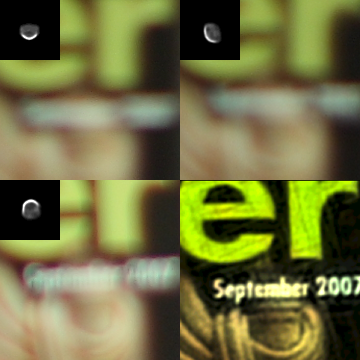- Tang, H. and Kutulakos, K.N., Utilizing Optical Aberrations for Extended-Depth-of-Field Panoramas,
In: Proc. 11th Asian Conf. on Computer Vision (ACCV), Daejeon, Korea, 2012. (Oral)
[paper pdf][slide pdf][derivation pdf]
- Tang, H. Light-Efficient Panoramas, MSc. Report, Department of Computer Science, University of Toronto, 2010.
[pdf]
|

